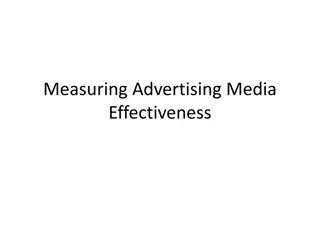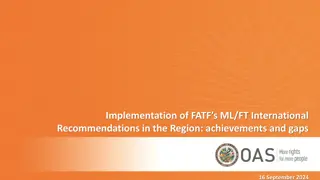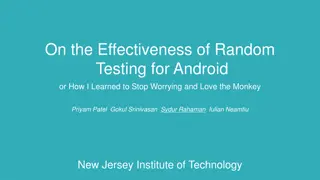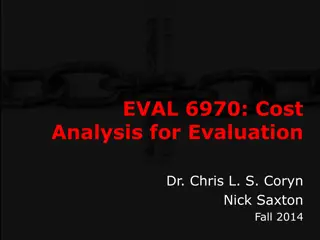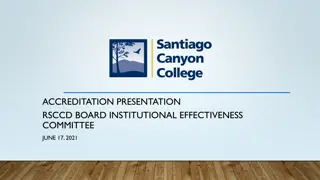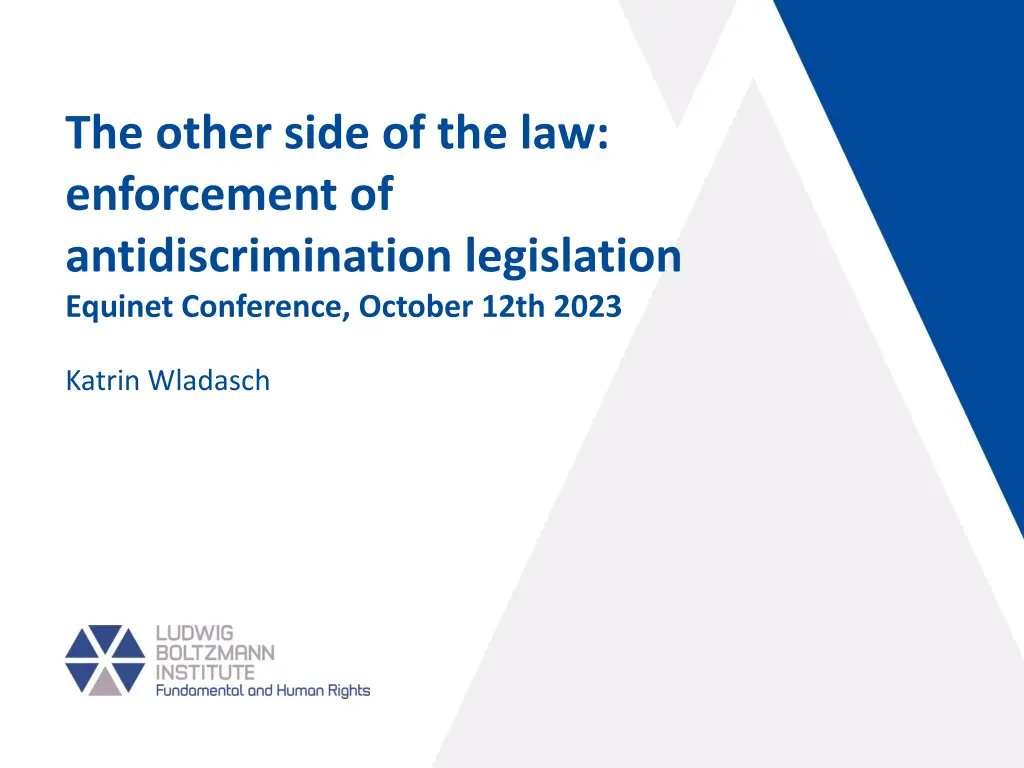
Enforcement of Anti-Discrimination Legislation Insights
Gain valuable insights into the enforcement of anti-discrimination legislation, addressing the evolution over two decades, challenges with underreporting, and strategies to enhance rights awareness and protection in the EU context. Explore topics such as the coverage of discrimination in private law, reasons for underreporting, and the importance of rights awareness for effective implementation. Join the discussion at the Equinet Conference for a comprehensive understanding of advancing equality and combating discrimination in society.
Download Presentation

Please find below an Image/Link to download the presentation.
The content on the website is provided AS IS for your information and personal use only. It may not be sold, licensed, or shared on other websites without obtaining consent from the author. If you encounter any issues during the download, it is possible that the publisher has removed the file from their server.
You are allowed to download the files provided on this website for personal or commercial use, subject to the condition that they are used lawfully. All files are the property of their respective owners.
The content on the website is provided AS IS for your information and personal use only. It may not be sold, licensed, or shared on other websites without obtaining consent from the author.
E N D
Presentation Transcript
The other side of the law: enforcement of antidiscrimination legislation Equinet Conference, October 12th 2023 Katrin Wladasch
Two decades ago . . . Implementation of EU anti-discrimination Acquis starts . . . No/scarse legal framework in most countries of the EU Apart of equal treatment of men and women in the workplace Why should discrimination in private law area be covered by law? Lack of understanding, what discrimination means/comprises Hesitance in applying (procedural) standards THIS HAS CHANGED!!!! Titel der Pr sentation / Dr. Name Nachname Namens- oder Datumszeile
Starting Point now . . . Lack of effectiveness Due to Underreporting Uneven protection against discrimination (hierarchy of grounds, protection gap intersectional discrimination) Burden on the individual case Sanction regime not adequate to guarantee effective redress and/or effective deterrent Encourage reporting to equality bodies FRA opinion Equality in the EU 20 years on from the initial implementation of the Equality Directives CJEU, C-443/15, Parris v. Trinity College Dublin and Others, 24 November 2016 Titel der Pr sentation / Dr. Name Nachname Namens- oder Datumszeile
Underreporting Reasons for not reporting Perception that reporting would not change anything Hesitance to reveal sexual orientation or gender identity Concern that incident would not be taken seriously Lack of knowledge, how and where to report Inconvenience, bureaucracy, costs and time FRA opinion Equality in the EU 20 years on from the initial implementation of the Equality Directives FRA (2020), EU-LGBTI II A long way to go for LGBTI equality Titel der Pr sentation / Dr. Name Nachname Namens- oder Datumszeile
Rights awareness High level of awareness of discrimination being unlawful (67%) vs. different levels of awareness of any organisation that offers support or advice to victims of discrimination, including equality bodies, depending on familiarity with the system people live in (low levels for non citizens & ethnic minorities) level of education resources of equality bodies in relation to population level of trust in state institutions Context is important FRA (2017), Second European Union Minorities and Discrimination Survey FRA opinion Equality in the EU 20 years on from the initial implementation of the Equality Directives Titel der Pr sentation / Dr. Name Nachname Namens- oder Datumszeile
Beyond the individual case When there is no concrete person affected by discrimination or person does not want to proceed in a case. no barrier to finding discrimination associations with a legitimate interest can be given the right to bring legal or administrative proceedings in the general interest of a group by national legislation. (Feryn, C-54/07, confirmed by Accept, C-81/12) Strategic litigation competencies of EBs (and NGOs) can be given -> articles 9 standards Directives proposals Titel der Pr sentation / Dr. Name Nachname Namens- oder Datumszeile
Sanctions Sanctions in discrimination cases have to be effective dissuasive proportionate design is up to national legislator compensation and penalties prevention? collective redress 2000/43/EC Race Directive Art 15, 2000/78/EC Employment Equality Directive Art 17, 2006/54/EC Recast Directive Art 25 Titel der Pr sentation / Dr. Name Nachname Namens- oder Datumszeile
Sanctions basic principles CJEU Sanctions in discrimination cases should be adequate in relation to the damage sustained (von Colson C-14/83) not be mere symbolic (ACCEPT C 81/12) not be made dependant on a proof of fault (Decker C-177/88) have a real deterrant effect (Decker C-177/88) not have any upper limits (Marshall C-271/91) not be dependant on the existance of an individual victim (Feryn C- 54/07) might include punitive damages that are really additional (Mar a Auxiliadora Arjona Camacho v Securitas Seguridad Espa a, S.A., C- 407/14) include applicant s right to have a court examine, if discrimination has occurred. Braathens Regional Aviation AB, C 30/19 Basic standards but no guidance Titel der Pr sentation / Dr. Name Nachname Namens- oder Datumszeile
Reality Complexity of legal framework Different levels of awareness and knowledge about access to justice Different levels of protection/ different institutions in charge Lack of case law that could serve as guidance High tresholds for evidence in order to shift the burden of proof Enduring legal uncertainties (e.g. need of specific ethnicity) Low amounts of penalties and compensations, basic standards but no guidance Limitations in enforcement of recommendations Sometimes high court fees (e.g. claim dismissed in part) Titel der Pr sentation / Dr. Name Nachname Namens- oder Datumszeile
Role of Equality Bodies Raise awareness and enhance rights clarity (case of the month, surveys) Cooperation with NGOs (close/er to those affected by discrimination) proactively reaching out Guidance througout the system of protection against discrimination (gate-opener) Experts not only in discrimination but also in non- discrimination (single case solutions and structural level) Strategic litigation Elaborate guidance on sanctions and remedies? Be creative - tribunal type EBs Titel der Pr sentation / Dr. Name Nachname Namens- oder Datumszeile
Furthering factors . . . Ensure coherence of legal framework Close gaps in legislation (intersectionality) Reduce (including invisible) barriers for accessibility (art. 6,11) Ensure access to legal aid/ create funds covering cost risks Provide for the possibility of actio popularis and other litigation powers (art. 9) Reduce court fees for discrimination cases Raise awareness and build networks (art. 12, 13) Ensure adequate resources for equality bodies (art. 4) Titel der Pr sentation / Dr. Name Nachname Namens- oder Datumszeile
Thank you for your attention! katrin.wladasch@univie.ac.at Titel der Pr sentation / Dr. Name Nachname Namens- oder Datumszeile



